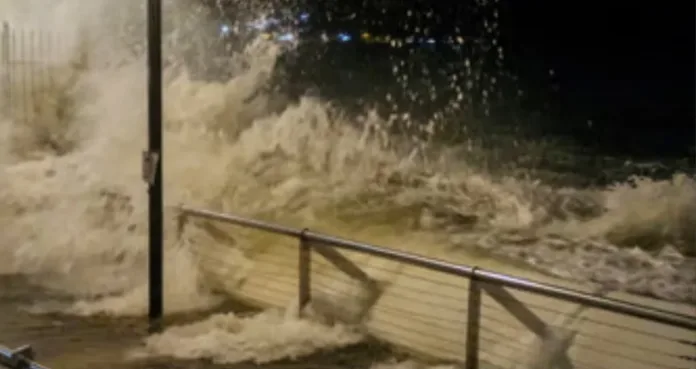Ragasa leaves 14 dead in Taiwan, 129 missing, and triggers mass evacuations in China
People in Taiwan and leaving 129 missing, as China and Hong Kong brace for its full impact. The powerful storm, the strongest the region has faced in years, has already forced the evacuation of hundreds of thousands and brought cities to a standstill.
The fatalities were reported in Hualien, an eastern county in Taiwan popular with tourists. According to Taiwan’s fire department, all of the dead and missing are from the town of Guangfu, where a barrier lake burst and unleashed a torrent of water that swept through the community. Survivors described scenes of devastation. A postman surnamed Hsieh told reporters that the floodwaters crashed into his home like a “tsunami”, carrying his car into his living room. Entire neighbourhoods were swallowed up within minutes, leaving search teams battling thick mud, fallen rocks and collapsed roads to reach the stranded.
Elsewhere in Hualien, the village of Dama, home to around 1,000 residents, has been completely submerged. Its chieftain, Wang Tse-an, described a desperate situation, saying many locals remain trapped. “It’s chaotic now. There are mud and rocks everywhere,” he said. Rescue efforts have been hampered by the scale of the flooding and continuing downpours, while electricity and communications have been knocked out across swathes of the area.
The storm also claimed lives in the Philippines, where authorities reported four deaths and nearly 700,000 people affected in Luzon, the country’s largest and most populous island. Families were forced into evacuation centres as homes and farmland were battered by high winds and torrential rain.
Now Ragasa is hurtling towards mainland China and the international hub of Hong Kong. The Guangdong provincial government confirmed that more than 370,000 people have already been evacuated, with coastal areas locked down ahead of landfall. Authorities have issued stark warnings of hurricane-strength winds exceeding 120 miles per hour, storm surges and widespread flooding.
In Hong Kong, officials raised the city’s storm warning to the maximum level of 10 on Wednesday morning, a rare move signalling the threat of catastrophic damage. Flights have been cancelled, ferries suspended and schools shut, with the normally bustling financial centre eerily quiet as residents hunker down indoors. Giant waves have already begun crashing into the city’s shorelines, flooding promenades and low-lying roads.
Images emerging from across the region show roads turned into rivers, cars overturned and roofs torn from buildings. Meteorologists warn that Ragasa’s size and intensity make it particularly dangerous, with the potential to cause long-lasting damage to infrastructure and trigger landslides in mountainous areas. Emergency teams in both Hong Kong and Guangdong are on high alert, preparing for mass rescues once conditions allow.
China’s national weather agency has urged citizens in the storm’s path to take shelter immediately, warning that the typhoon could rival the destructive force of past historic storms. Local authorities in Guangdong have converted schools, stadiums and government offices into makeshift shelters for evacuees. Supplies of food, water and medicine have been stockpiled, though officials admit that power outages and blocked transport links could complicate relief efforts.
The sheer scale of Ragasa has drawn comparisons with the worst natural disasters to hit the region in recent memory. With Taiwan still searching for more than a hundred missing people, the immediate focus remains on rescue and survival. For China and Hong Kong, the test now lies in withstanding the brunt of a storm system that has already demonstrated its capacity for destruction.
